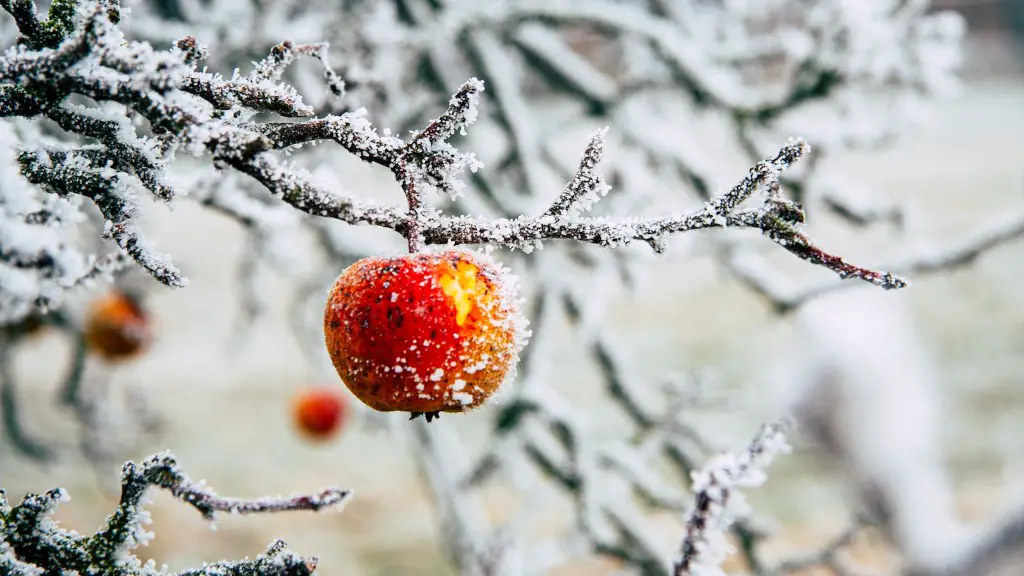The Basic Principles of Trimming an Avocado Tree
A well-trimmed avocado tree can yield flavorful, high quality fruits for years. Trimming an avocado tree can be done to maintain its structure and health, control its growth, or direct it to bear larger fruits. To begin, it is important to understand the principles and technique of pruning and trimming an avocado tree.
Avocado trees are fast-growing, so it is important to remove dead or damaged branches regularly. Damaged or dead branches will attract pests and disease, while reducing the efficiency of the tree’s production. Additionally, trimming the avocado tree helps to ensure that the growing shoot tips are getting the desired exposure to sunlight.
To maintain proper shape, older trees should have their canopy thinned out. This will keep the canopy open, allowing for easier access for spraying and harvesting. Avocado trees will produce an excess of shoots, so removing some of them is necessary to keep the tree from becoming too dense.
Planning an Avocado Tree Trim
Before beginning a trim, it is important to determine the objective. If the goal is to maintain health and structure, then thinning canopy should be the primary focus. On the other hand, if the goal is to achieve better fruit production and quality, then shoots should be trimmed and thinned.
It is important to observe the tree before and after trimming. Identifying unproductive or dead branches that need to be removed will help ensure an effective trim. Additionally, the objective should be kept in mind when removing individual branches or shoots. In general, shoots that are growing towards the center of the tree should be removed as they will not receive sufficient sunlight. Furthermore, extra lateral branches can be reduced to increase the production of fruits.
How To Trim An Avocado Tree
It is important to have the right tools before beginning a trim. Pruning shears or loppers and saws should be used for trimming. Gloves and protective eyewear are necessary to prevent injuries.
When trimming, take care not to cut too much. As avocado trees are fast-growing, they will produce more foliage if too much is removed. Make sure to remove the entire branch, rather than just the shoot tips. Additionally, remove any suckers growing from the trunk.
For an open canopy trim, select the branches that need to be removed and cut with a saw. Avoid creating a jagged cut – use pruning shears or loppers instead. It is important to pay attention to the trim height, as some pruners make the mistake of cutting too low.
Care After Trimming An Avocado Tree
After trimming, ensure that the tree receives adequate water to help it heal properly. Applying the right mulch and fertilizer will help to keep the tree healthy and vigorous. Additionally, ensure that the tree is in a well-ventilated area, as this will help prevent pest infestations.
Trimming an avocado tree is relatively straightforward, but can be labor-intensive depending on its size. By following the basic principles and techniques, one can maintain an attractive and productive tree.
Winter Pruning
Avocado trees should be pruned during the winter months when the trees are dormant. During this time, pruning the branches and thinning the canopy will help reduce disease-causing organisms and promote better fruit production. To begin, select the branches that need to be removed and cut just outside their collar or the bark at the point of attachment. Any dead wood or branches should be removed first.
Furthermore, it is important to select the right branches for removal. Branches that are low-hanging, dead, diseased, or damaged should be removed. Additionally, any branches that are crossing each other or overlapping should be trimmed. Doing so will allow for more sunlight and air circulation, which in turn will help prevent insect infestations and disease.
Late-Year Pruning
Pruning in the late-year can help reduce the size of an avocado tree and make it more manageable. Late-year pruning can help increase quality and the size of fruits by controlling the number of flower clusters and increasing the availability of resources. Selective thinning in the late-year can also help promote better air circulation and sunlight penetration. This will help to prevent fungal diseases and insect infestations.
When pruning in the late-year, it is important to be selective when removing branches. Generally, it is best to remove the multiple branches growing on the same axis or in the same plane. Additionally, it is important to pay attention to the health of the branches. Branches that are diseased or damaged should be removed immediately to prevent further damage.
Fall Pruning
Pruning in the fall months is essential in controlling the size of an avocado tree and helping it to remain healthy. By removing excess growth and thinning the canopy, one can promote better air circulation and sunlight penetration. Additionally, pruning at this time can help reduce fungal diseases and insect infestations.
When pruning in fall, it is important to remove the biggest and weakest branches first. This will prevent the removal of too much foliage at once. Additionally, it is important to prune larger branches, as they may become too heavy for the tree to support. Additionally, it is important to remove any dead and diseased branches.
Trimming After Fruiting
After the avocado fruits have been harvested, it is important to trim away the excess or dead growth. This will help to improve the tree’s appearance, as well as reduce the occurrence of pests and diseases. Additionally, removing these limbs will open up the canopy and allow more sunlight and air to reach the center of the tree.
When trimming after fruiting, it is important to select the right branches for removal. Generally, thinning out the canopy is preferred, as this will improve access for harvesting and spray applications. Additionally, any branches that are crossing each other or overlapping should be trimmed, as they will not receive adequate sunlight.

